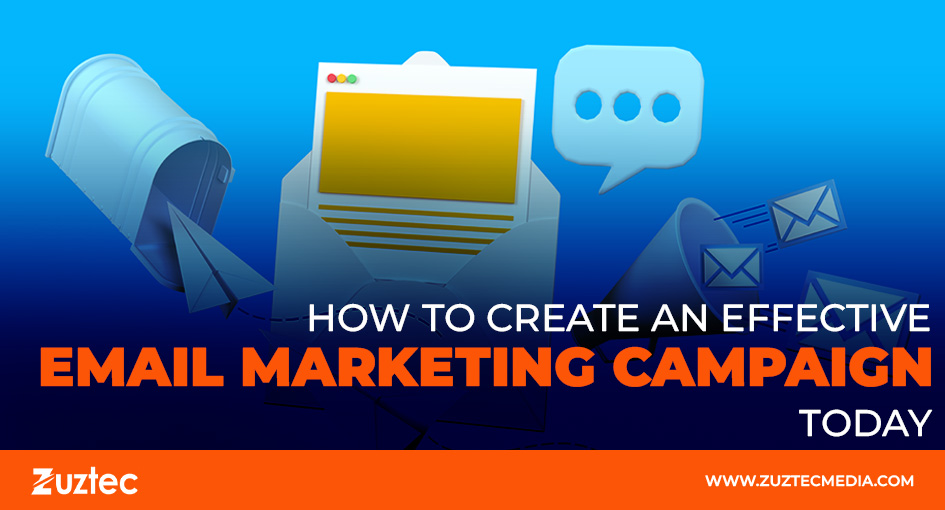
How to Create an Effective Email Marketing Campaign Today
Email remains one of the most reliable and cost-effective marketing tools available to businesses today. Whether you’re launching a new product, nurturing leads, or building relationships with loyal customers, email provides a direct line of communication that few other platforms can offer. With billions of emails sent daily, the challenge lies not in reaching inboxes but in creating an email marketing campaign that grabs attention and delivers results.
A successful email campaign goes beyond writing a catchy subject line or sending a discount code. It involves understanding your audience, setting clear goals, segmenting your list, crafting personalized content, and measuring performance over time. When executed thoughtfully, email campaigns can drive traffic, boost conversions, and build lasting customer relationships.
Despite the rise of social media and instant messaging apps, email marketing continues to outperform many channels in terms of ROI. That’s because it allows you to reach people who have already expressed interest in your brand. These are users who have opted in, making them more likely to engage with your content when it’s relevant and well-timed.
In this article, we’ll look at the key components of a powerful campaign of email marketing. From planning and design to content and analysis, each section will give you practical steps to improve your approach. Whether you’re a beginner or looking to refine your existing strategy, this guide will help you make the most of your email efforts and see better results over time.
Building The Foundation Of Your Email Marketing Campaign
Before you send your first email, it’s important to set up a strong foundation. This means clearly defining your goals, knowing your audience, and selecting the right tools for the job. Your marketing campaign should have a purpose—whether that’s to sell a product, inform customers, or drive website traffic. Every part of your email should align with that main goal.
The first step is list building. You want a clean, permission-based email list made up of people who want to hear from you. Instead, use lead magnets like free downloads, discount codes, or exclusive content to encourage users to sign up organically. Ensure your opt-in forms are simple and communicate the value of subscribing.
Not all subscribers are the same. Some may be new, some returning, and others highly engaged. Use data such as purchase history, location, or engagement level to divide your list into meaningful groups. This allows you to send more personalized messages that speak directly to each audience segment.
Popular tools like Mailchimp, ConvertKit, and ActiveCampaign offer templates, automation, and analytics to help you run campaigns effectively. Make sure the tool you choose supports list segmentation, A/B testing, and tracking performance metrics.
By establishing these fundamentals—clear goals, a permission-based list, smart segmentation, and the right tools—you’re in a strong position to launch an email marketing campaign that is focused, strategic, and more likely to deliver results.
Crafting Content That Connects And Converts Readers
Once the email is opened, the content needs to keep the reader’s attention. Use a clear headline and structure your content so it’s easy to scan. Break text into short paragraphs and include bullet points when listing features or benefits. Always write in a tone that matches your brand and feels human. Avoid overly formal or robotic language, which can make your emails feel impersonal.
Visual design is also critical. Use images, buttons, and white space to make your email visually appealing without overwhelming the reader. Make sure your emails are mobile-friendly, as many people read them on their phones. Great content doesn’t just inform—it inspires action. When your emails are relevant and visually clean, they build trust with your audience and encourage them to engage with your brand.
Measuring Results And Improving Future Campaigns
After sending your emails, your work isn’t done. The final step in any effective marketing campaign is analyzing its performance and applying what you’ve learned to future campaigns. This ongoing process helps you improve results over time and ensures your strategy evolves with your audience’s preferences.
The most common metrics to monitor include open rates, click-through rates, conversion rates, bounce rates, and unsubscribe rates. Each of these tells a different part of the story. For example, low open rates might suggest your subject lines aren’t compelling, while low click-through rates could point to weak CTAs or unengaging content.
It’s also valuable to look at long-term trends. Track how your email list is growing, how customer segments are engaging, and how email is contributing to your overall marketing goals. Some platforms allow you to build customer journeys that trigger emails based on user behavior, helping you create smarter, more timely campaigns.
Don’t forget to gather feedback from your audience when possible. A simple survey can help you understand what subscribers like or dislike about your emails. Use that feedback to make improvements that are informed by real user experience.
By consistently measuring your results and optimizing based on data, your email marketing campaign becomes more efficient, effective, and aligned with your audience’s needs. Over time, this builds stronger relationships and contributes to greater business success.

